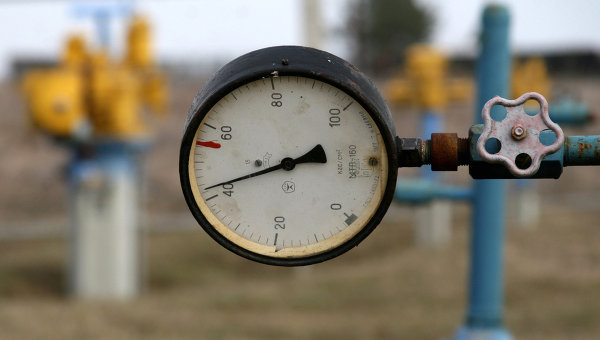
BP’s Appraisal Doubles the Proven Reserves of Turkmenistani Gas
Publication: Eurasia Daily Monitor Volume: 9 Issue: 137
By:

On July 17, British Petroleum (BP) presented the 2012 edition of its annual publication, “Statistical Review of World Energy,” in Ashgabat (Trend, Interfax, July 17). Released each year in June, and dubbed a “bible” in the energy business, BP’s Statistical Review covers reserves, production and the trade movements, globally and on a country-by-country basis. Held each year in different venues, the presentation event was held this year in Turkmenistan for the first time. This choice implicitly acknowledges Turkmenistan’s potential as a natural gas supplier on a Eurasia-wide scale with a global impact.
The 2012 Statistical Review appraises Turkmenistan’s proven natural gas reserves at 24.3 trillion cubic meters as of the end of 2011. This almost doubles the 13.4 trillion cubic meters in Turkmenistan’s proven reserves as of the end of 2010, recorded by the 2011 Statistical Review (itself an increase over the previously reported nine trillion cubic meters in proven reserves). On the current assessment, Turkmenistan holds 11.7 percent of the world’s proven natural gas reserves, almost equal with Qatar’s 25 trillion cubic meters and 12 percent of world reserves. (In the Review’s definition, “proved [sic] reserves are quantities that geological and engineering information indicates with reasonable certainty can be recovered from known reservoirs under existing conditions”).
Turkmenistan produced 59.5 billion cubic meters (bcm) in 2011 – a small fraction of its undeveloped potential. Turkmen gas exports in 2011 included 10 bcm to Russia, another 10 bcm to Iran, and 14 bcm to China. Presenting the Statistical Review in Ashgabat, BP’s vice-president and chief economist Christof Ruehl noted that Turkmenistan accounts for a significant and growing share of China’s gas imports, but interest is universal in accessing gas supplies from Turkmenistan (www.bp.com/statisticalreview/2012; www.turkmenistan.gov, July 17).
This reserve data is largely in line with audits carried out by the London-based Gaffney, Cline & Associates in recent years in Turkmenistan. The BP Review’s appraisal looks slightly more conservative than Gaffney Cline’s findings. According to these, South Yolotan and nearby gas deposits (the cluster of reservoirs recently renamed Galkynysh in Turkmenistan’s east) hold just under 20 trillion cubic meters on the “best estimate” (i.e., deemed the most likely within the given range of estimates – see EDM, October 20, 2011). That comprises the lion’s share of Turkmenistan’s total gas reserves, which include other onshore fields and its Caspian offshore. Gaffney Cline’s Galkynysh audits have met with broad acceptance in the business, despite downplaying by Russian Gazprom, which sees in Turkmenistan a potential competitor for European markets.
Turkmenistan’s gas export outlook is a dynamic one. At present, gas production grows rapidly at the Bagtyarlyk cluster of fields, concessioned to China. A Chinese-led Asian consortium is launching field work at South Yolotan (see above). Ashgabat has doubled its future export commitment to China, from 30 bcm per year contracted in 2009 to 65 bcm per year, as agreed in November 2011 and confirmed in June 2012. The 30 bcm annual delivery level is expected to be reached by 2014 (Interfax, www.turkmenistan.gov, Xinhua, June 7). The growing commitment to China corresponds with the planned expansion in the capacity of the Chinese-built pipeline out of Turkmenistan.
Pre-existing pipeline capacities include some 45 bcm annually in two lines northward to Russia, and nearly 20 bcm in two lines southward to Iran. Those capacities are currently under-utilized at 10 bcm in either direction (see above), but they remain available for fuller utilization as backup options. Ashgabat compares and contrasts high security of demand from China versus low security of demand from Russia (as experienced traumatically in 2009), prioritizing its export options accordingly. However, China’s purchase price for Turkmenistani gas is deeply discounted, in compensation for Beijing’s investment in the pipeline.
Ashgabat finds it useful to keep negotiating on the proposed Turkmenistan-Afghanistan-Pakistan-India pipeline for 35 bcm of Turkmenistani gas per year. The situation in Afghanistan renders this plan theoretical, however. Meanwhile, Ashgabat offers to commit 40 bcm annually after 2016 for delivery to Europe, including 30 bcm from onshore and 10 bcm from offshore fields (see accompanying article).
The missing European direction looks the most attractive commercially from Ashgabat’s standpoint. Reciprocally, the European Commission looks to Turkmenistan for diversification of Europe’s supplies, particularly in Gazprom-dominated markets. But Ashgabat needs Western political assurances against the possibility of Russian countermeasures.
Ashgabat anticipates that its vast reserves can supply “any volumes [of gas] for existing and future pipelines,” according to official comments on the occasion of BP’s presentation (TDH [Turkmen Government Press Service], July 17). By taking this position, Ashgabat makes clear that accessing gas supplies from Turkmenistan need not become a zero-sum contest among the interested parties. The country‘s reserves should in due course support growing exports in multiple directions simultaneously, depending on the pace of gas field development.
However, timing and sequencing are decisive considerations. Turkmenistan’s vast reserves can indeed support multiple export destinations (China, Russia, Iran, Europe) simultaneously from future production at full throttle. Such production, however, can only come on stream stage by stage during the next decade. Even if not a zero-sum game, it will be a first-come-first-served game. This holds special relevance to Europe.




